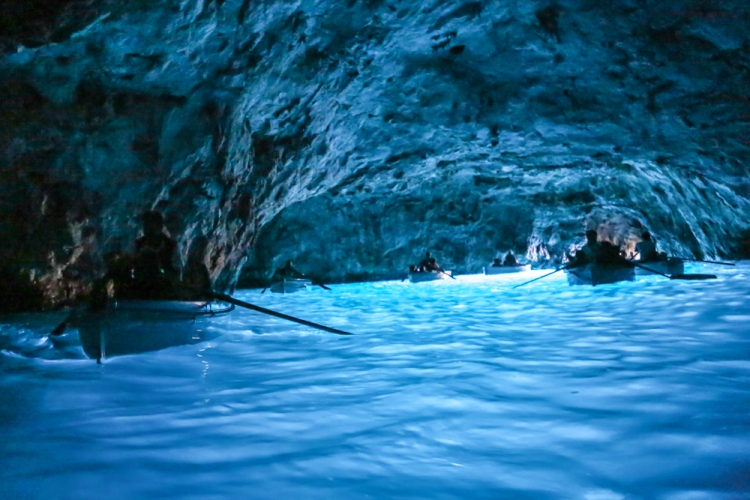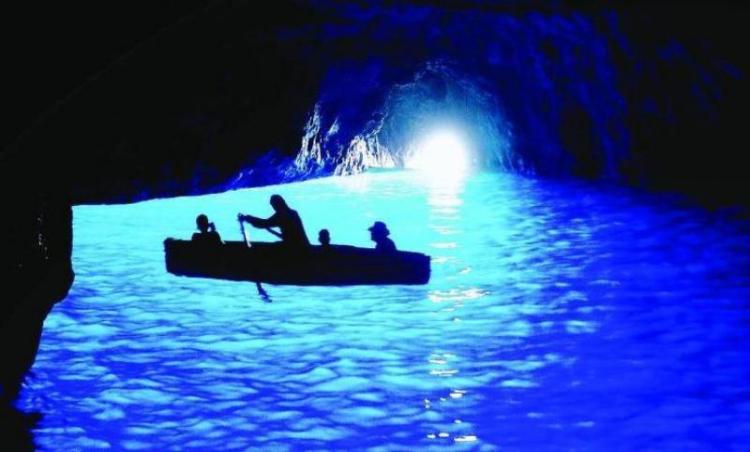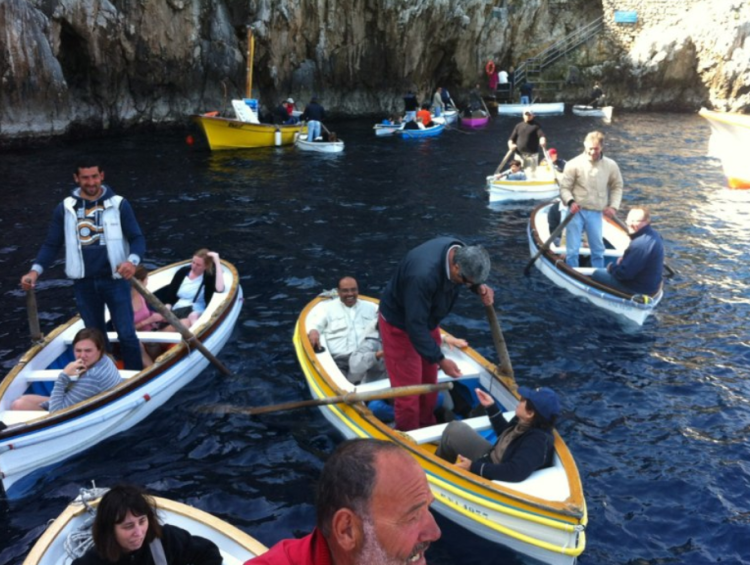The Blue Grotto, situated at Anacapri, was known locally as “Grotta Gràdola”, the name being taken from the neighbouring ancient landing place of “Gràdola” and “Gradelle”, popular because of its narrow access, and because of the legends about monsters and witches that dwelt in it.
The revelation of the “Blue Grotto” was thanks to two German tourists who visited Capri in 1826: Augustus Kopisch, a writer, and Ernst Fries, a painter; their chief merit was that of bestowing a new name: “Grotta Azzurra”.
The cave sank during a geological age 15-20 metres below the present sea level and thus blocked every opening through which light might enter directly, except the narrow breach of access with the result that both the cavity of the grotto and the sea basin that is enclosed in it acquired two different and magical colours, for, on one side the sunlight penetrating from below through a veil of sea water springs out and is reflected onto the sides and the vault of the grotto colored with azure; and on the other side, this light being reflected by the white sandy bottom of the grotto renders the water strangely opalescent so that any object that is bathed in it drips and vibrates with a silvery light.

The Romans not only knew the Blue Grotto (in italian “Grotta Azzurra”), but had made it the object of particular investigations, though the type of their researches was obscure. At that time the conditions of the grotto were the same as they are today in the days of Augustus and Tiberius. And a careful study of the remains of Roman works inside the grotto and of the ancient structures on the outside, may assist us to understand what the “Blue Grotto” meant to the Romans.
Along the end wall facing the breach of access the Grotta presents a cavity; this cavity is accessible by a small landing step covered by Roman concrete work; while a square opening in the shape of a window which is accessible from a step evidently cut by human hands is opened in the wall of the rock just opposite the entrance.
The rocky landing step and the square opening seem to be made on purpose to permit people to land and to enjoy comfortably from the land the fascinatingly clear basin of azure. But this square hollows reaches deeper into the mountain becoming an increasingly winding and narrow cuniculus. The slabs of rock heaped at its sides suggest that the Romans opened this tunnel searching for spring water and abandoned it after a fruitless exploration.
Because of its position below the imposing “Villa di Damecuta” it is obvious to suppose that the Grotta was a “nymphaeum” that was accessible from the sea, and perhaps also from the land by a more secret road that has now crumbled.


————————————————
For your tour:
tel. +39 3284134719
Skype: Archeoemy

